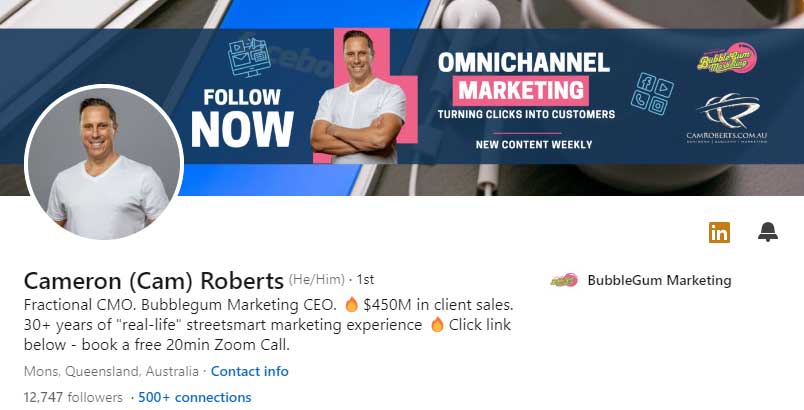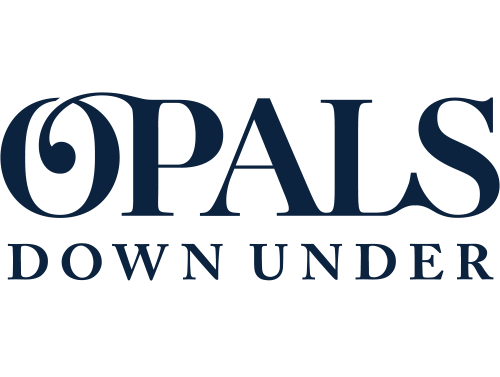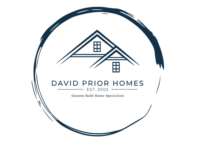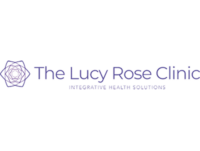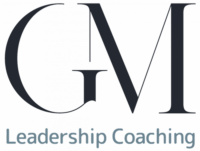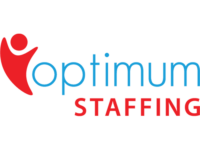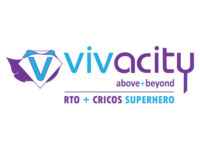How to Create a Sales Funnel That Boosts Customer Retention
By Cameron Roberts – Founder & CEO of Bubblegum Marketing,
Posted On January 16, 2025
Building an effective sales funnel is crucial for any business seeking to keep customers. A well-designed sales funnel guides potential buyers from awareness to loyalty.
Using the right sales funnel strategies can really help boost your customer retention. This article will delve into the steps for how to create a sales funnel , helping you build a robust framework.
Let’s explore how to craft a sales funnel that not only converts leads but also keeps your customers coming back.
Understanding the Sales Funnel
A sales funnel is a simple visual that shows the steps a customer takes before buying something. It helps grab attention, spark interest, and guide people toward making a purchase. The funnel gets smaller as people move closer to buying, with each step designed to keep them interested and ready to buy. It’s a useful tool to turn leads into customers.
A sales funnel is not just about making sales; it’s about building relationships with customers. By grasping the steps customers follow, businesses can design experiences that connect with their audience, boosting the likelihood of converting one-time buyers into repeat customers.
Visualizing the sales funnel helps businesses identify where customers are losing interest and which stages need more attention. This allows them to use their resources more efficiently.
With the rise of digital marketing, sales funnels have become more complex, moving beyond a simple path to purchase. Today, customers interact with brands across different platforms, which reflects the changes in how people shop and make decisions.
Stages of a Sales Funnel
1. Awareness Stage
- Customers first learn about your brand.
- Goal: Make potential customers aware of your products/services (e.g., via social media, blogs, search engines).
2.Interest Stage
- Prospects show interest by engaging with your content, checking out your website, or subscribing to newsletters.
- Goal: Provide more detailed info to help them understand how your product/service meets their needs.
3.Decision Stage
- Prospects compare products, prices, features, and benefits.
- Goal: Move them toward purchase with incentives like discounts, offers, or free trials.
4.Action Stage
- Lead makes a purchase.
- Goal: Make the buying process easy and ensure confidence in their decision.
5.Retention Stage
- Focus on keeping customers satisfied, engaged, and loyal.
- Goal: Use follow-up emails, loyalty programs, excellent customer service, and content to maintain value.
Crafting an Effective Sales Funnel Strategy
Step 1: Define Your Target Audience
Understanding your audience is fundamental to creating a successful sales funnel. Conduct market research to identify their demographics, preferences, and pain points. This information will guide your marketing efforts and help tailor your messaging.
In-depth audience analysis involves utilizing tools like surveys, focus groups, and analytics platforms to gather data. Find shared characteristics among your top customers to develop detailed buyer personas.
These personas will guide not only your funnel’s structure but also the tone and style of your messaging. rewrite this paragraph and dont use tough words and it make sense
Step 2: Create Compelling Content
Content is the backbone of your sales funnel. Develop engaging and informative content that addresses your audience’s needs at each stage of the funnel. Utilize blog posts, videos, infographics, and social media to capture attention and build trust.
Crafting compelling content means understanding the unique needs of your audience at different stages.
During the awareness phase, content needs to be informative and easy to share, positioning your brand as an industry leader.
During the consideration phase, content needs to be thorough and persuasive, targeting the particular questions and worries your audience might have.
Experiment with various content formats to see what resonates best with your audience. Interactive content, like quizzes or polls, engages users in a fun way. Long-form content like whitepapers or eBooks builds your authority by offering in-depth information.
Both types of content offer value and keep your audience engaged.
Step 3: Leverage Marketing Automation
Marketing automation tools make your sales funnel smoother, helping you send the right messages to prospects at the right time. Use automation to send personalized emails, nurture leads, and track engagement. This not only saves time but also enhances the customer experience.
Automation can significantly enhance the efficiency of your sales funnel. By setting up automated workflows, you ensure that prospects receive the right message at the right time. For instance, trigger welcome emails for new subscribers or cart abandonment reminders for users who didn’t complete their purchase.
Personalization is crucial in automation. Utilize data gathered from user interactions to segment your audience and tailor your messages. Automated messages should feel personal and relevant, rather than generic broadcasts.
Step 4: Optimize Landing Pages
Landing pages are crucial for turning visitors into leads. Make sure they look good, are easy to use, and include convincing text. Try A/B testing to find what works best for your audience.
A good landing page should be clear and focused. Streamline navigation to minimize distractions and focus visitors’ attention on the primary action you want them to take. Keep the design simple, matching your brand, and use images that support your message.
Test different parts of your landing page, like headlines, images, or buttons, to see what increases conversions. Keep improving your pages based on the results and feedback to get the best performance.
Step 5: Implement Retention Strategies
Customer retention is key to long-term success. Develop strategies that keep customers coming back, such as loyalty programs, exclusive offers, and personalized recommendations. Happy and satisfied customers are more likely to become brand advocates, spreading the word about your business.
Great retention strategies are all about building solid relationships and keeping the value coming. Regularly communicate with your customers through newsletters or personalized follow-ups that show appreciation and offer value. Encourage feedback to understand their needs better and improve your offerings.
Consider creating a community around your brand where customers can share experiences and engage with each other. This not only fosters loyalty but also provides valuable insights into how your products are used and perceived.

Measuring Success
Key Metrics to Track
To evaluate the effectiveness of your sales funnel, monitor key metrics such as:
- Conversion Rate: The percentage of prospects who complete the desired action.
- Customer Acquisition Cost (CAC): The cost of acquiring a new customer.
- Customer Lifetime Value (CLV): The total revenue generated from a customer over their lifetime.
- Churn Rate: The percentage of customers who stop doing business with you.
By evaluating these metrics, you will gain insights into your sales funnel’s performance and pinpoint areas that could use improvement.Regularly evaluating these metrics assists in identifying the strengths and weaknesses of your sales funnel.
Conversion rates show how well your funnel is doing at each stage, while CAC and CLV give a bigger picture of how effective your customer acquisition strategies are financially.
Understanding churn rate is crucial for retention strategies. A high churn rate could suggest problems with your product or customer experience, needing further review and action.
Use these insights to refine and optimize your funnel on a continuous basis.
Real-World Examples
Example 1: E-commerce Success Story
An online fashion retailer implemented a robust sales funnel strategy by utilizing targeted social media ads to drive awareness. They then nurtured leads with personalized email campaigns, offering style tips and exclusive discounts.
Here are five captivating titles for your blog post:
- Create a Sales Funnel for Customer Retention
- Master Sales Funnel Strategies to Boost Loyalty
- Effective Sales Funnel Creation for Lasting Relationships
- Improve Customer Retention with Sales Funnels
- Unlock Loyalty Through Successful Sales Funnel Strategies
By optimizing their checkout process and introducing a loyalty program, they saw a 30% increase in repeat purchases within six months.
Their success highlights the importance of using various channels, such as social media to capture attention and email marketing to establish strong relationships.
By addressing potential friction points in the checkout process and offering incentives repeat purchases, they effectively boosted customer retention.
This example highlights how important it is to keep improving and adjusting. The retailer regularly tested new strategies and gathered customer feedback, allowing them to refine their approach and maintain a competitive edge.
Example 2: SaaS Company Growth
A software-as-a-service (SaaS) company improved their sales process by creating helpful content that addressed common problems. They used webinars and free trials to engage potential customers and set up marketing automation to send follow-up emails at the right time. As a result, their conversion rate increased by 25%, and they also saw a rise in customer retention.
This strategy highlights how valuable educational content can help build trust and credibility.
By providing valuable information initially, the company positioned itself as an expert, increasing the chances that prospects would select their service.
Marketing automation kept communication consistent and relevant, enhancing the customer experience and fostering long-term relationships. This example shows how a carefully designed sales funnel can successfully boost both customer acquisition and retention.
Conclusion
Creating a sales funnel that boosts customer retention requires a strategic approach and a deep understanding of your audience. By knowing your audience, creating engaging content, using automation, and focusing on retention, you can build a sales funnel that turns leads into loyal customers.
Remember, a successful sales funnel is not static. Consistently analyze performance, gather feedback, and refine your strategies to ensure sustained business growth. With the right sales funnel strategies in place, you can enhance your online presence, attract more customers, and drive sales like never before.
To keep a competitive advantage, stay updated on new trends and technologies that might influence your sales funnel.
Explore fresh concepts and experiment with various strategies to keep your funnel updated and effective.
The primary goal is to create an experience that resonates with your customers, meeting their needs and exceeding their expectations at every stage of the funnel.
This approach not only boosts conversions but also helps cultivate a loyal customer base, ensuring the long-term success of your business.
WANT TO BE OUR NEXT SUCCESS STORY?
Book a Free Consult
Schedule a 15-minute Free Consultation via Zoom meetings with our Director, Cam Roberts by clicking the button below now:
Recent Articles
- Why Your Email Click Rates Look Low in 2025
- How Our eCommerce Marketing Agency Drove 121% Growth
- What Is Google BARD? A Guide to Google’s New AI
- Facebook Ads Budgeting & Strategies for 2025
- Top Marketing Strategies from Fortune 500 Companies
- Weird & Wonderful: Things Google Probably Doesn’t Want You to Know
- Top 7 Mistakes Businesses Make Without a Facebook Ads Specialist
- Why Automated Sales Funnels Are a Game-Changer for Small Businesses
- How to Choose the Right Facebook Ads Agency in 2025
- Social Media Advertising Trends 2025 for Business Growth
Request A Quote
Request A Quote for your next Website or Funnel Project below:
